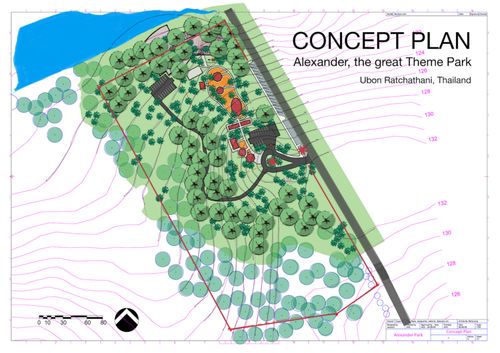园艺设计创业思路及方向怎么写
Title: Unveiling the Path: Entrepreneurial Strategies and Directions in Horticultural Design
In the realm of horticultural design, entrepreneurship offers a fertile ground for innovation and creativity. Whether you're a budding enthusiast or a seasoned professional looking to embark on an entrepreneurial journey, the fusion of horticulture and design presents a myriad of opportunities. Let's explore some key strategies and directions to navigate the landscape of horticultural design entrepreneurship:
Identifying Your Niche:
Before delving into entrepreneurial endeavors, it's crucial to identify your niche within the vast domain of horticultural design. Consider your passions, expertise, and the market demand. Are you drawn to sustainable landscaping, vertical gardens, or perhaps urban green spaces? Understanding your niche will not only differentiate you from competitors but also align your business with your unique strengths and interests.
Market Research and Analysis:
Conducting thorough market research is essential for gaining insights into consumer preferences, emerging trends, and competitor landscape. Explore local demographics, assess the demand for horticultural design services, and analyze the pricing strategies of existing businesses. This information will inform your business model and help you tailor your offerings to meet the needs of your target market.
Crafting a Compelling Brand Identity:
Your brand identity serves as the cornerstone of your entrepreneurial venture. It encapsulates your values, aesthetics, and the essence of your horticultural design philosophy. Develop a compelling brand narrative that resonates with your target audience and sets you apart from competitors. From logo design to brand messaging, ensure consistency across all touchpoints to foster brand recognition and loyalty.
Building a Diverse Portfolio:
As an aspiring entrepreneur in horticultural design, building a diverse portfolio is paramount. Showcase your expertise and versatility by undertaking a variety of projects, ranging from residential landscapes to commercial developments. Highlight your creativity, attention to detail, and ability to translate clients' visions into captivating green spaces. A robust portfolio not only attracts potential clients but also establishes your credibility within the industry.
Embracing Sustainable Practices:
Incorporating sustainable practices into your horticultural design business not only aligns with environmental stewardship but also appeals to an increasingly ecoconscious consumer base. Explore ecofriendly landscaping techniques, utilize native plants, and integrate watersaving irrigation systems to minimize environmental impact. Emphasize your commitment to sustainability in your marketing efforts to attract environmentally conscious clients.
Networking and Collaboration:
Networking is instrumental in forging valuable connections within the horticultural design industry. Attend industry events, join professional associations, and engage with fellow designers, landscapers, and architects. Collaborate with complementary businesses such as nurseries, garden centers, and environmental organizations to expand your network and access new opportunities. Cultivate mutually beneficial relationships that can lead to referrals and collaborative projects.
Investing in Continuous Learning:

The field of horticultural design is everevolving, with new techniques, technologies, and trends emerging regularly. Stay abreast of industry developments by investing in continuous learning and professional development. Attend workshops, seminars, and conferences to enhance your skills, explore innovative design concepts, and stay ahead of the curve. Embrace lifelong learning as a cornerstone of your entrepreneurial journey.
Delivering Exceptional Customer Experience:
Exceptional customer experience is the bedrock of a successful horticultural design business. Prioritize client satisfaction by actively listening to their needs, communicating transparently, and delivering results that exceed expectations. Cultivate strong relationships built on trust, reliability, and integrity. Wordofmouth recommendations from satisfied clients can be a potent driver of business growth.
Adapting to Technological Advancements:
Technology continues to revolutionize the field of horticultural design, offering tools and resources to streamline processes and enhance creativity. Embrace digital design software, drone technology for site surveys, and augmented reality for visualizing concepts. Leverage social media platforms and digital marketing strategies to showcase your work, engage with your audience, and attract new clients in the digital age.
Navigating Regulatory and Legal Landscape:
Ensure compliance with local regulations, zoning ordinances, and environmental laws when undertaking horticultural design projects. Familiarize yourself with permit requirements, property easements, and any restrictions that may impact your designs. Consult with legal professionals or regulatory authorities to navigate potential challenges and mitigate risks associated with regulatory compliance.
In conclusion, embarking on an entrepreneurial journey in horticultural design requires a blend of creativity, strategic planning, and business acumen. By identifying your niche, conducting market research, building a compelling brand, and delivering exceptional customer experience, you can carve a niche for yourself in this dynamic industry. Embrace sustainability, leverage technology, and cultivate meaningful relationships to thrive as a horticultural design entrepreneur in an everevolving landscape.
本文 农牧产业 原创,转载保留链接!网址:https://zgnmcyw.com/post/21886.html
1.本站遵循行业规范,任何转载的稿件都会明确标注作者和来源;2.本站的原创文章,请转载时务必注明文章作者和来源,不尊重原创的行为我们将追究责任;3.作者投稿可能会经我们编辑修改或补充。








